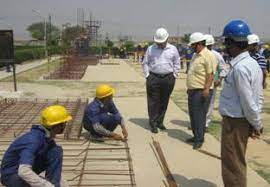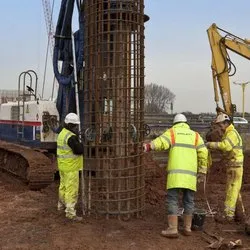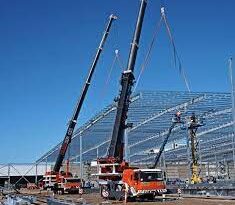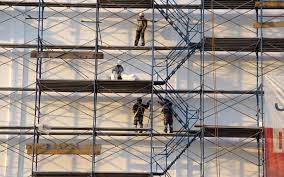Assistant Bar Bender and Steel Fixer ( 6month course)
Assistant Bar Bender and Steel Fixer click here
Brief Job Description
Assistant bar bender and steel fixer is responsible for identification, handling and use of tools and tackles,
materials and equipment. The responsibilities also include reading and understanding reinforcement bar
details from hand sketches and bar bending schedule, performing cutting, threading and manual bending
of rebar and fabricating, placing and fixing of reinforcement bar at the desired location using correct ties
within specified time and tolerance.
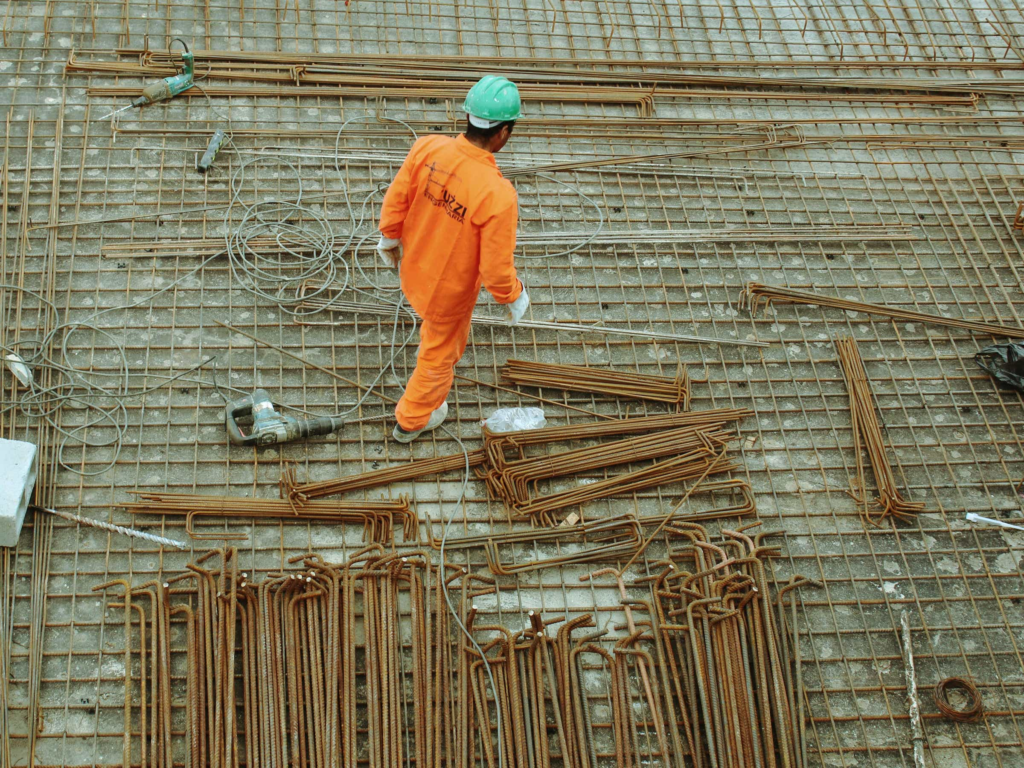
Personal Attributes
The individual is expected to be physically fit and able to work across various locations, withstanding
extreme conditions while working. The person should be able to work within a team to handle various bar
bending tools and materials and work under instructions and close supervision.
Read and understand reinforcement bar detail from hand sketches
Description
This unit describes the skills and knowledge required to be proficient in reading and understanding
reinforcement bar details from hand sketches
Scope
The scope covers the following :
Read and understand rebar (reinforcement bars) details from hand sketches
Elements and Performance Criteria
Read and understand rebar details from hand sketches
To be competent, the user/individual on the job must be able to:
PC1. read and understand rebar details from hand sketches
PC2. identify diameter, cutting length, number and shape of rebar from hand sketch
PC3. identify cover for rebar from hand sketch
PC4. read spacing detail for stirrups, main and secondary rebar, bar chairs, spacer bar from hand
sketch
PC5. calculate cutting length of rebar for stirrups, hanger bar and chairs
PC6. calculate cutting length of rebar for simple shapes
Knowledge and Understanding (KU)
The individual on the job needs to know and understand:
KU1. safety rules and regulations for handling and storing reinforcement tools, materials and
components
KU2. personal protection including use of safety gears and equipment
KU3. safe working methods and movements while performing relevant tasks
KU4. request procedure for tools & materials
KU5. housekeeping & other site administrative rules
KU6. hand sketches related to reinforcement work
KU7. units of measurements and conversion of linear units
KU8. measurements and marking tools
KU9. different types of rebar, their grade and standard size
KU10. different types and thickness of binding wire
KU11. methods of protecting steel from rusting
KU12. simple arithmetic calculation
KU13. calculation of cutting length for simpler shape, stirrups, chairs etc.
KU14. unit weight of steel
KU15. importance of scale given in drawing
KU16. how to make stirrups of different shapes
KU17. use of stirrups, hanger bars, chairs and spacer bar
KU18. covers for different types of structural element
KU19. method of inserting, placing and fixing of rebar for different structural element
KU20. how to calculate cutting length for stirrups, hanger bars, chairs and for other simple shape of
rebar
KU21. how to read bar bending schedule
KU22. spacing of rebar and its importance
Generic Skills (GS)
User/individual on the job needs to know how to:
GS1. write in at least one language, preferably in the local language of the site
GS2. read in one or more language, preferably in the local language of the site
GS3. read instructions, guidelines, sign boards, safety rules & safety tags instructions related to
exit routes during emergency at the workplace
GS4. speak in one or more language, preferably in one of the local languages of the site
GS5. listen and follow instructions given by the superior
GS6. decide whether his workplace is safe for working and also whether his work is not creating
hazardous conditions for others
GS7. complete work as per agreed time schedule and quality
Use and maintain materials, tools and equipment relevant to reinforcement works
Description
This unit describes the skills and knowledge required to use and maintain materials, tools and equipment
relevant to reinforcement works under instructions and close supervision
Scope
The scope covers the following :
Use and maintain materials, tools and equipment relevant to reinforcement works
Elements and Performance Criteria
Use and maintain materials, tools and equipment relevant to reinforcement works
To be competent, the user/individual on the job must be able to:
PC1. use materials such as binding wire, bar connecting coupler, thread protection cap
PC2. use different types of rebar as per instructions
PC3. use hand tools such as lever, hook, measurement tape, gauge, sledge hammer, chisel, pin
plate and other relevant tools used in reinforcement works
PC4. use power tools such as hand held rebar cutting machine, circular rebar cutting machine and
shearing machine for cutting of rebar
PC5. use threading machine for making threads on rebar as per instruction
PC6. use bending machine for rebar bending using different types of bushes and other accessories
under supervision
PC7. use different types of slings, shackles and lifting belts for lifting and shifting of rebars
PC8. use personal protective equipment such as safety shoes, gloves, helmets, ear, plugs, nose
mask, safety goggles as per requirements
PC9. wear full and half body safety harness as per requirement
PC10. perform basic maintenance of hand tools
PC11. perform basic maintenance of power tools

Knowledge and Understanding (KU)
The individual on the job needs to know and understand:
KU1. safety rules and regulations for handling and storing reinforcement tools, materials and
components
KU2. personal protection including use of safety gears and equipment
KU3. safe working methods and movements while performing relevant tasks
KU4. request procedure for tools & materials and equipment
KU5. housekeeping &other site administrative rules
KU6. use of hand tools such as lever, hook, measuring tape, sledge hammer , chisel
KU7. types of binding wire
KU8. types of reinforcement steel, their grade and size
KU9. types of cutting and bending machine
KU10. method of cutting reinforcement using hand tool
KU11. method of cutting and bending of rebar
KU12. importance of correct body posture
KU13. types and use of slings, shackles and lifting belts
KU14. standard procedure for stacking of reinforcement
KU15. work place procedures, policies and mechanical handling
KU16. housekeeping standards procedures required in the workplace
KU17. position of overhead electrical wires and cables during shifting / lifting of materials
KU18. visual checking for quality of materials
KU19. storing and handling technique of tools
KU20. upkeep repair and maintenance of tools
Generic Skills (GS)
User/individual on the job needs to know how to:
GS1. write in at least one language, preferably in the local language of the site
GS2. read in one or more language, preferably in the local language of the site
GS3. read instructions, guidelines, sign boards, safety rules & safety tags instructions related to
exit routes during emergency at the workplace
GS4. speak in one or more language, preferably in one of the local languages of the site
GS5. listen and follow instructions given by the superior
GS6. decide whether his workplace is safe for working
GS7. place materials in correct position near the job to ensure sufficient availability
GS8. identify location at which violation of any safety norms may lead to accidents
Perform cutting and manual bending of rebar for simple shapes
Description
This unit describes the skills and knowledge required to perform cutting and manually bend rebar for
simpler shapes under continuous instructions and close supervision
Scope
The scope covers the following :
Cutting and manual bending of rebar for simple shape
Elements and Performance Criteria
Cutting and manual bending of rebar for simple shape
To be competent, the user/individual on the job must be able to:
PC1. select type of rebar as per instruction
PC2. select hand tool or power tool for cutting of rebar as per the requirement
PC3. use measurement tape and mark cutting length on rebar as per instruction
PC4. operate hand or power tool for cutting of rebar maintaining correct body posture
PC5. straight rebar using appropriate tools before bending if required
PC6. maintain correct body posture while bending rebar manually
PC7. mark on rebar, use lever or pipe of suitable diameter for bending of rebar
PC8. mark on bending bench for making stirrups, chairs, hanger bars
PC9. place the rebar into a pipe of specified diameter
PC10. bend bars to required shape and angle manually as per criteria laid down on code sheets
PC11. check bent rebar for its shape, angle & length
Knowledge and Understanding (KU)
The individual on the job needs to know and understand:
KU1. safety rules and regulations for handling and storing reinforcement tools, materials and
components
KU2. personal protection including use of safety gears and equipment
KU3. safe working methods and movements while performing relevant tasks
KU4. request procedure for tools & materials
KU5. housekeeping &other site administrative rules
KU6. hand sketches related to reinforcement work
KU7. units of measurements and conversion of linear units
KU8. use of measurements and marking tools
KU9. use of hand tools such as lever, hook, chisel, sledgehammer, measuring tape, bending pipe etc.
KU10. use of power tools for cutting, threading and bending of rebar
KU11. different types of rebar, their grade and standard size
KU12. how to calculate unit weight of steel
KU13. different types and thickness of binding wire
KU14. methods of protecting steel from rusting
KU15. tolerances for bending and cutting of rebar
KU16. tagging procedures for rebar basis shape, size and location
KU17. carry out simple measurements using metric and imperial systems
KU18. calculation of cutting length for simpler shape, stirrups, chairs
Generic Skills (GS)
User/individual on the job needs to know how to:
GS1. write in at least one language, preferably in the local language of the site
GS2. read in one or more language, preferably in the local language of the site
GS3. read instructions, guidelines, sign boards, safety rules & safety tags instructions related to
exit routes during emergency at the workplace
GS4. speak in one or more language, preferably in one of the local languages of the site
GS5. listen and follow instructions given by the superior
GS6. communicate orally and effectively with team members
GS7. decide whether his workplace is safe for working
GS8. identify and organize hand tools for performing task
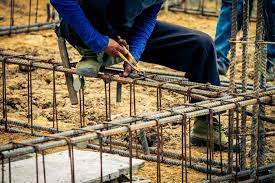
GS9. identify and use relevant hand tools effectively
GS10. complete work as per agreed time schedule and quality
GS11. minimize wastages
GS12. revert to superior for selection/sorting of materials
GS13. identify location at which violation of any safety norms may lead to accidents
Assist in fabrication, placing and fixing of rebar for prefabricated and in-situ RCC structures
Description
This unit describes the skills and knowledge required to fabricate, place and fix reinforcement for prefabricated and in-situ R.C.C structures such as column, beam, slab, wall, footing and provide necessary
assistance under instruction and close supervision.
Scope
The scope covers the following :
Fabricate, place and fix rebar for pre-fabricated and in-situ R.C.C structures and provide necessary
assistance for reinforcement works
Elements and Performance Criteria
Fabricate, place and fix rebar for pre-fabricated and in-situ R.C.C structures and provide necessary
assistance for reinforcement works
To be competent, the user/individual on the job must be able to:
PC1. follow correct method for insertion/ fixing of rebar as per the types of structure (column,
beam, slab and wall)
PC2. place and fix rebar on its positions as per marking and instructions
PC3. maintain uniform spacing between the bars, stirrups, links as per marking and instructions
PC4. stagger the lap to avoid more than 50% of splicing
PC5. tie reinforcement with approved binding wires and use ties such as hairpin tie, ring hairpin
tie, ring slash tie, crown tie as per instructions
PC6. Place and tie cover blocks at regular interval
PC7. place and fix spacer bars to maintain proper gap between double layer rebar as per
instruction
PC8. place and fix chairs at specified spacing to maintain correct thickness in case of slab
reinforcement
PC9. follow sequence of tying for different types of pre-fabricated and in-situ R
PC10. use binding wire economically for tying of rebar
Knowledge and Understanding (KU)
The individual on the job needs to know and understand:
KU1. safety rules and regulations for handling and storing reinforcement tools, materials and
components
KU2. personal protection including use of safety gears and equipment
KU3. safe working methods and movements while performing relevant tasks
KU4. request procedure for tools & materials
KU5. housekeeping &other site administrative rules
KU6. sequence for tying of rebar for in-situ and prefabricated cages
KU7. use of chairs, spacer bars, hanger bars
KU8. lapping length for different diameter of rebar
KU9. Importance of distribution rebar
KU10. different types of stirrups used in bar bending works
KU11. different types of ties used in bar bending works such as slash tie, ring slash tie, hairpin tie,
ring hairpin tie, crown tie, slash tie
KU12. importance of clear cover while carrying out reinforcement works
KU13. standard tolerance limits in reinforcement works
KU14. conversion of linear units
KU15. electrical safety of powers tools and equipment used in bar bending works
KU16. types of rebar, their grade and standard length
KU17. types and use of binding wire such as mild steel, GI wire
KU18. types and use of cover blocks such as plastic and concrete
Generic Skills (GS)
User/individual on the job needs to know how to:
GS1. write in at least one language, preferably in the local language of the site
GS2. read in one or more language, preferably in the local language of the site
GS3. read instructions, guidelines, sign boards, safety rules & safety tags instructions related to
exit routes during emergency at the workplace
GS4. speak in one or more language, preferably in one of the local languages of the site
GS5. listen and follow instructions given by the superior
GS6. communicate orally and effectively with team members
GS7. decide whether his workplace is safe for working
GS8. complete work as per agreed time schedule and quality
Erect and dismantle temporary scaffold up to 3.6 meter height
Description
This unit describes the skills and knowledge required to erect and dismantle 3.6 meter temporary scaffold
Scope
The scope covers the following :
Erect and dismantle temporary scaffold up to 3.6 meter height
Elements and Performance Criteria
• Erect and dismantle temporary scaffold up to 3.6 meter height
To be competent, the user/individual on the job must be able to:
PC1. level area where scaffold need to be erected and check for ground compactness if required
PC2. shift and stack required materials, components, tools and tackles at the instructed location
PC3. wear and use required safety gadgets and follow trade safety
PC4. place base plates and sole boards on the ground as per markings and instructions
PC5. use proper components and follow standard procedure for erecting temporary scaffold up to
3.6 m
PC6. check verticality of scaffold at first level of erection and correct (if required) before moving to
the next level
PC7. check for rigidity, stability and support of erected scaffold
PC8. fix walk-boards, guard rails, toe-boards and other components on working platform
PC9. follow standard procedure for dismantling of 3.6 m temporary scaffold
PC10. remove guard rails, toe boards, walk boards and other components sequentially
PC11. clean and stack all components properly after dismantling
PC12. maintain tidiness at work location
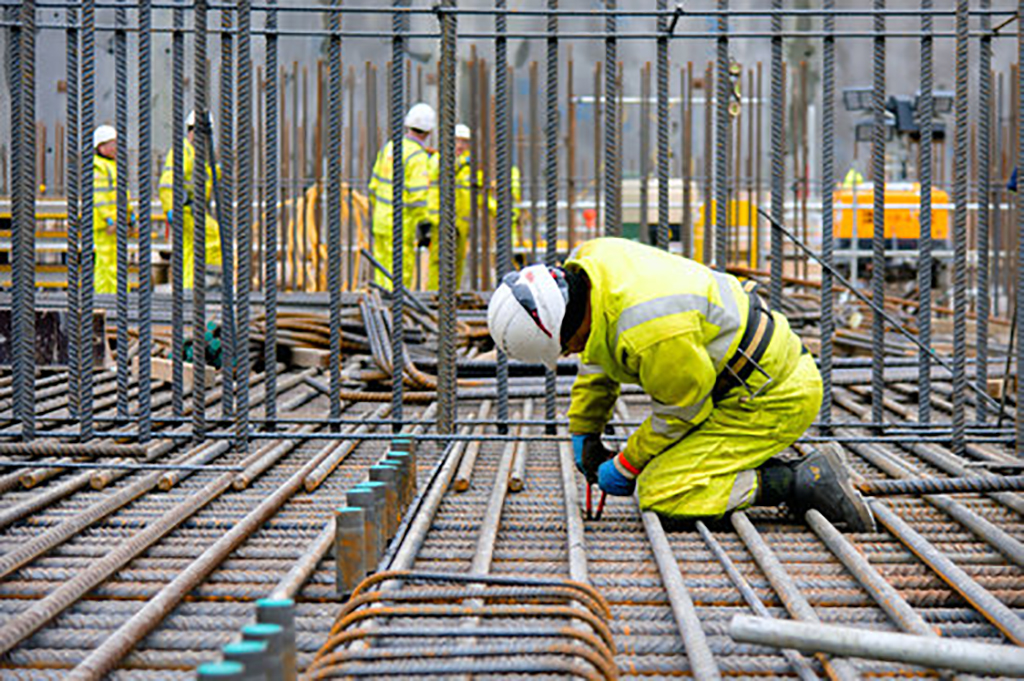
Knowledge and Understanding (KU)
The individual on the job needs to know and understand:
KU1. standard procedure for scaffolding works
KU2. safety rules and regulations for handling and storing scaffolding tools, materials and
components
KU3. personal protection including use of safety gears and equipment
KU4. safe working methods and movements while performing relevant tasks
KU5. request procedure for tools & materials
KU6. housekeeping & other administrative rules
KU7. use of different types of scaffolds (cup-lock , frame scaffold)
KU8. use of tools and tackles in scaffolding works
KU9. identification and use of different components
KU10. use of tools for measurements and marking
KU11. basic arithmetic calculation
KU12. units of measurements
KU13. standard size of scaffolding components
KU14. personal protective equipment for safety
KU15. importance of housekeeping
KU16. standard procedure for erection and dismantling of 3.6 m temporary scaffold
KU17. tools and equipment used for erecting and dismantling 3.6 meter temporary scaffoild
Generic Skills (GS)
User/individual on the job needs to know how to:
GS1. write in one or more language, preferably in the local language of the site
GS2. read one or more language, preferably the local language of the site
GS3. read instructions, guidelines, sign boards, safety rules & safety tags instruction related to
exit routes during emergency at the workplace
GS4. speak in one or more language, preferably in one of the local languages of site
GS5. listen and follow instructions / communication shared by superiors/ co- workers regarding
team requirements or interfaces during work processes
GS6. orally communicate with co-workers regarding support required to complete the respective
work
GS7. decide whether the workplace is safe for working and also whether the relevant work is not
creating hazardous conditions for others
GS8. identify and organize right scaffolding materials
GS9. identify and use relevant tools effectively
GS10. complete work as per agreed time and quality
GS11. minimize wastages
GS12. revert to superior for selection/sorting of materials
GS13. identify location at which violation of any safety norms may lead to accidents
Work effectively in a team to deliver desired results at the workplace
Description
This unit describes the skills and knowledge required to work effectively within a team to achieve the
desired results
Scope
The scope covers the following :
Interact and communicate effectively with co-workers, superiors and sub-ordinates across different
teams
Support co-workers, superiors and sub-ordinates within the team and across interfacing teams to
ensure effective execution of assigned task
Elements and Performance Criteria
Interact and communicate in effective and conclusive manner
To be competent, the user/individual on the job must be able to:
PC1. pass on work related information/ requirement clearly to the team members
PC2. inform co-workers and superiors about any kind of deviations from work
PC3. address the problems effectively and report if required to immediate supervisor appropriately
PC4. receive instructions clearly from superiors and respond effectively on the same
PC5. communicate to team members/subordinates for appropriate work technique and method
PC6. seek clarification and advice as per the requirement and applicability
Support co-workers to execute project requirements
To be competent, the user/individual on the job must be able to:
PC7. hand over the required material, tools tackles, equipment and work fronts timely to interfacing
teams
PC8. work together with co-workers in a synchronized manner
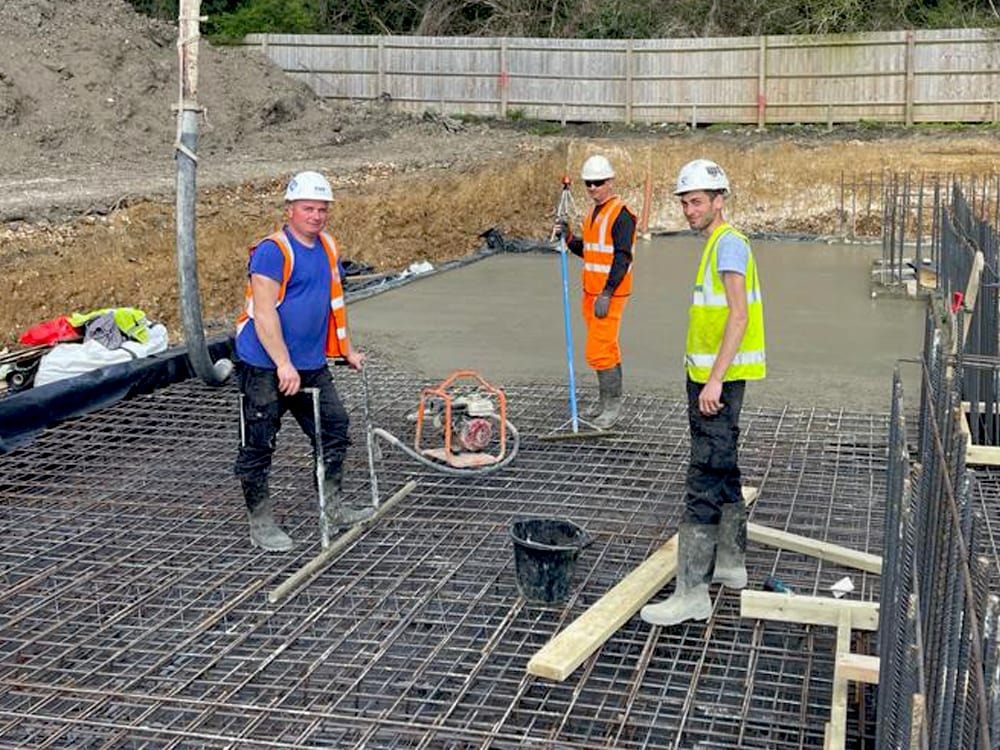
Knowledge and Understanding (KU)
The individual on the job needs to know and understand:
KU1. own roles and responsibilities
KU2. importance of effective communication and establishing strong working
KU3. risks of a failure in teamwork in terms of effects on project outcomes, timelines, safety at the
construction site, etc.
KU4. different modes of communication, and its appropriate usage
KU5. importance of creating healthy and cooperative work environment among the gangs of
workers
KU6. different activities within his work area where an interaction with other workers is required
KU7. applicable techniques of work, properties of materials used, tools and tackles used, safety
standards that co- workers might need as per the requirement
KU8. importance of proper and effective communication and the expected adverse
KU9. importance and need of supporting co-workers facing problems for smooth
Generic Skills (GS)
User/individual on the job needs to know how to:
GS1. write in at least one language, preferably in the local language of the site
GS2. read in one or more languages, preferably the local language of the site
GS3. read communication from team members regarding work completed, materials used, tools
and tackles used, support required
GS4. speak in one or more languages, preferably in one of the local language of the site
GS5. listen and follow instructions / communication shared by superiors/ co-workers regarding
team requirements or interfaces during work processes
GS6. orally communicate with co-workers regarding support required to complete the respective
work
GS7. decide on what information is to be shared with co-workers within the team or from
interfacing gang of workers
GS8. plan work and organize required resources in coordination with team members
GS9. complete all assigned task in coordination with team members
GS10. take initiative in resolving issues among co-workers or report the same to superiors
GS11. ensure best ways of coordination among team members
GS12. communicate with co-workers considering their educational / social background
GS13. evaluate the complexity of task and determine if any guidance is required from superiors
Work according to personal health, safety and environment protocol at construction site
Description
This NOS covers the skill and knowledge required for an individual to work according to personal health,
safety and environmental protocol at construction site
Scope
The scope covers the following :
Follow safety norms as defined by organization
Adopt healthy & safe work practices
Implement good housekeeping and environment protection process and activities
Elements and Performance Criteria
Follow safety norms as defined by organization
To be competent, the user/individual on the job must be able to:
PC1. identify and report any hazards, risks or breaches in site safety to the appropriate authority
PC2. follow emergency and evacuation procedures in case of accidents, fires, natural calamities
PC3. follow recommended safe practices in handling construction materials, including chemical
and hazardous material whenever applicable
PC4. participate in safety awareness programs like Tool Box Talks, safety demonstrations, mock
drills, conducted at site
PC5. select and operate different types of fire extinguishers corresponding to types of fires as per
EHS guideline
PC6. identify near miss , unsafe condition and unsafe act
Adopt healthy & safe work practices
To be competent, the user/individual on the job must be able to:
PC7. use appropriate Personal Protective Equipment (PPE) as per work requirements including:
Head Protection (Helmets), Ear protection Fall Protection, Foot Protection, Face and Eye
Protection, Hand and Body Protection, Respiratory Protection (if required)
PC8. handle all required tools, tackles , materials & equipment safely
PC9. follow safe disposal of waste, harmful and hazardous materials as per EHS guidelines
PC10. install and apply properly all safety equipment as instructed
PC11. follow safety protocol and practices as laid down by site EHS department
PC12. undertake and pass height pass test as per EHS guideline
Implement good housekeeping practices
To be competent, the user/individual on the job must be able to:
PC13. collect and deposit construction waste into identified containers before disposal, separate
containers that may be needed for disposal of toxic or hazardous wastes
PC14. apply ergonomic principles wherever required
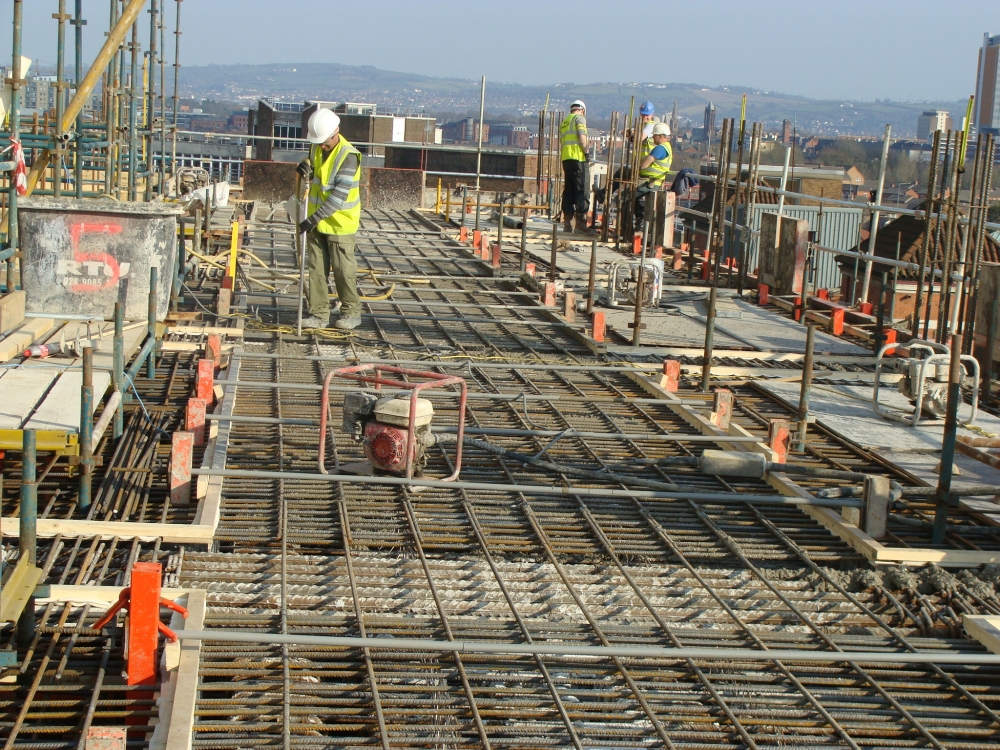
Knowledge and Understanding (KU)
The individual on the job needs to know and understand:
KU1. reporting procedures in cases of breaches or hazards for site safety, accidents, and
emergency situations as per guidelines
KU2. types of safety hazards at construction sites
KU3. basic ergonomic principles as per applicability
KU4. the procedure for responding to accidents and other emergencies at site
KU5. use of appropriate personal protective equipment to be used based on various working
conditions
KU6. importance of handling tools, equipment and materials as per applicable
KU7. health and environments effect of construction materials as per applicability
KU8. various environmental protection methods as per applicability
KU9. storage of waste including the following at appropriate location: non-combustible scrap
material and debris, combustible scrap material and debris, general construction waste and
trash (non-toxic, non-hazardous), any other hazardous wastes and any other flammable
wastes
KU10. how to use hazardous material, in a safe and appropriate manner as per applicability
KU11. types of fire
KU12. procedure of operating different types of fire extinguishers
KU13. safety relevant to tools, tackles, & requirement as per applicability
KU14. housekeeping activities relevant to task
Generic Skills (GS)
User/individual on the job needs to know how to:
GS1. write in at least one language, preferably in the local language of the site
GS2. fill safety formats for near miss, unsafe conditions and safety suggestions
GS3. read in one or more language, preferably in the local language of the site
GS4. read sign boards, notice boards relevant to safety
GS5. speak in one or more language, preferably in one of the local language of the site
GS6. listen instructions / communication shared by site EHS and superiors regarding site safety,
and conducting tool box talk
GS7. communicate reporting of site conditions, hazards, accidents, etc.
GS8. not create unsafe conditions for others
GS9. keep the workplace clean and tidy
GS10. identify safety risks that affect the health, safety and environment for self and others
working in the vicinity, tackle it if within limit or report to appropriate authority
GS11. assess and analyze areas which may affect health, safety and environment protocol on the site
GS12. ensure personal safety behavior GS13. respond to emergency
